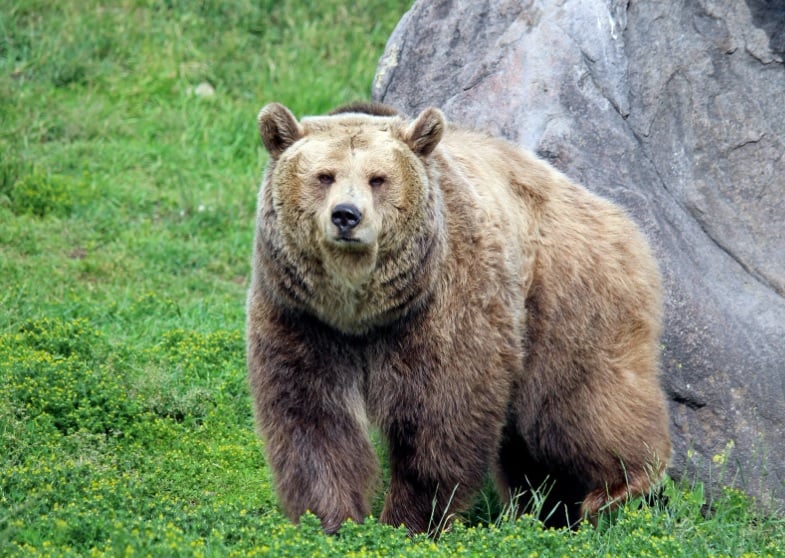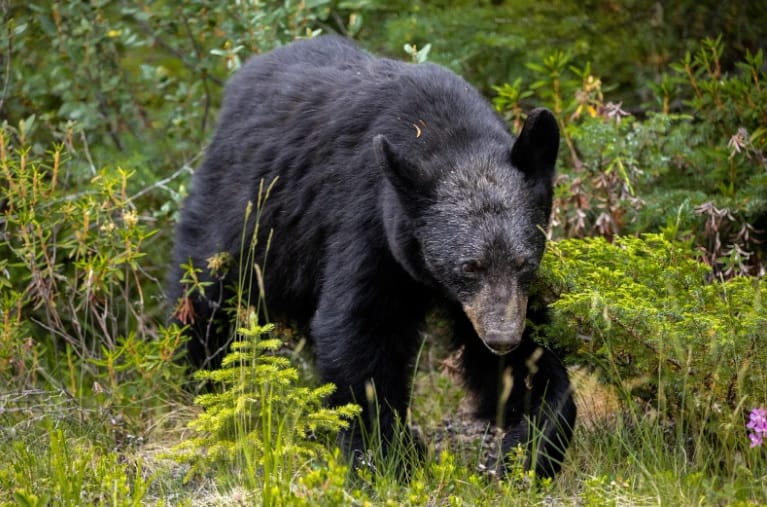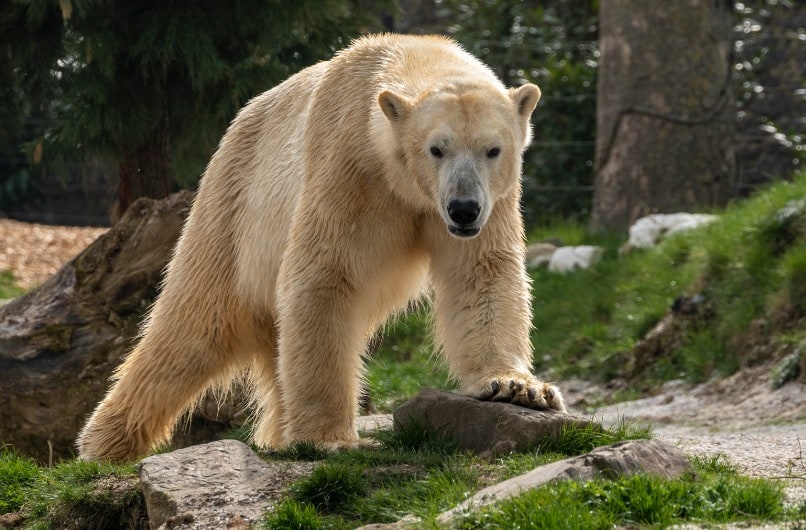
Standing still when faced with a gigantic, hairy, tooth-clacking, and salivating beast is not something most humans would find easy to do. Instead, natural instinct almost always wins, and after expressing fear in high-pitched dulcet tones, aka screaming, most turn and run for their lives. Seems a fairly obvious thing to do in the face of such aggression and anger; so, should you risk the chances of being eaten and actually stand still?
Yes, but not always. Standing still might prevent an attack when faced with a defensive bear, but this depends on the bear type and circumstances. However, predatory bears will attack, whether you remain stationary or not.
If you are an avid hiker or camper and frequently visit bear country, read on to discover if standing still might you save you from some unwanted grizzly snuggles.
Which Bears Are Which – Stand Still Or Not?
Standing still to avoid a bear attack largely depends on the type of bear you are facing. This is because for some bears, ‘ standing still works’; for others, not so much. Below are some bear types that may or may not be deterred with a simple game of statues!
- Brown Bear/ Grizzly

You’ll know a brown bear by its coloring (obviously) and the hunk of muscle on its upper back. Adult bears can weigh more than 1,000 lb and stand as tall as 6.5 feet. That’s a lot of bear to stare in the eye when trying to stand still but stand still; you must!
These cuddly creatures can reach speeds of 35 miles per hour, so outrunning one is going to be impossible anyway. This and the fact that bears, like dogs, love a game of ‘chase the fleeing human’ mean running is not going to improve your chances of avoiding an attack.
Furthermore, once caught, you won’t have Fido wagging his tail in glee but rather a 1,000-pound, aggressive, furry chunk of muscle sitting on your back!
2. Black Bear

Again the coloring will provide the clue you need to identify a black bear. They are also smaller than grizzly bears, with adults reaching 6 feet. While some say the black bear is less aggressive, this doesn’t mean they shouldn’t be treated with caution, as they can quickly decide you are a threat and go into defense mode!
If you meet up with a black bear, do not run or attempt to climb nearby trees. The black bear’s predatory instinct may be triggered as you run away, which can quickly have the bear seeing you as a delicious snack! They’re also excellent tree climbers and won’t have trouble following your escape route.
3. Polar Bear

For those heading into the Artic Circle (what? some people travel!), the polar bear is one to watch out for. As one of the biggest bear species on the planet, reaching heights of 10 feet, this bear is not one that sees humans as anything other than a walking ‘Big Mac’!
Unfortunately, when faced with a polar bear, standing still, playing dead, and speaking in a calm voice won’t work. This predatory bear is used to being at the top of the meal chain and would simply see you as easy dinner pickings. Of course, running won’t help either, and the fact that you will be surrounded by ice, snow, and water, all part of a polar bear’s playground, means your chances of surviving a polar bear attack are slim whether you stand still or run like crazy!
Types Of Bear Attack
Bear attacks are pretty rare; it’s not like bears go out intentionally seeking to attack humans. Well, mostly, unless we’re talking about polar bears, but that’s a food chain issue! However, bear attacks usually occur because the bear is protecting her cubs or feels threatened. Below are two methods bears might use to get their message across!
Bluff Charges
Bluff charges are fairly common and are meant to intimidate or scare you off. When a bear bluff charges, it will have its ears and head up and forward, puffing itself up to look bigger.
It might also bound up and down on its front paws or move in giant leaps towards you but stop and veer off to one side. Bears will often vocalize loudly (scare you a little further) or retreat after a bluff charge.
During a bluff charge, you should stand still, hold your ground and stay calm. Not easy to do, but better than triggering an attack by running away!
If you see a bluff charge is about to happen, lift your arms slowly above your head and talk to the bear calmly; remember to stand still! This lets the bear know you’re a human and not a threat. Or in the case of the polar bear, alerts them to their menu options!
Aggressive charges
An aggressive charge is dangerous; usually, there are telltale warning signs that indicate it’s time to take evasive action. These include clacking its teeth (the bear, not you), yawning, or stamping its front paws on the ground while huffing.
Such behaviors indicate the bear is stressed and is getting ready to charge. When the bear is about to charge, its head will be down with its ears pointing back. This isn’t the signal to start running! You’re probably thinking – you’ve got to be kidding, right? Nope. Although the bear will come at you fast ( remember 35 mph), running is not the best option. Instead, you must be ready to defend and protect yourself.
Here’s What To Do For Each Type Of Bear
- Brown bear/ grizzly
If you have bear spray, you should have already used it! If not, stay still without making a noise to convince the bear you’re not a threat. Instead, lie flat on your stomach, legs apart, with your arms/hands covering your neck and head. Again, keep as quiet as possible during the attack to prevent the bear from continuing. However, if the attack persists, fight back as hard as you can.
- Black bear
If it’s a black bear, don’t play dead or stand still. You need to fight back with everything you have. Make direct kicks and punches to the bear’s face and use any weapon like branches, rocks, or bear spray to defend yourself.
- Polar bear
If you happen to be near the North Pole, avoiding polar bears at all costs is our best advice! However, if a polar bear does see you as a tasty treat, use bear spray and any weapons you have to defend yourself. Let’s be honest, your chances of survival against a polar bear are slim to none, and if you do survive, we bet the Arctic won’t be a holiday destination of choice again!
The Last Growl
In most cases, bear attacks occur because humans (you) are in the wrong place at the wrong time. Perhaps you accidentally got between a mother and her cubs, or maybe you’re standing in the way of the garbage can. Remember, the bear is possibly more spooked than you, even if you don’t have fangs, salvia, and razor-sharp claws. So when faced with a grumpy bear, always remember to keep your cool, speak calmly, and above all, don’t run!

